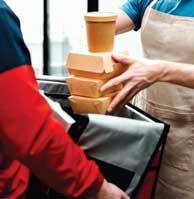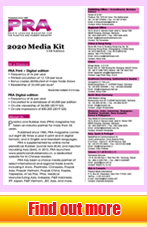Flexible Packaging: Adapting to the times with sustainable packaging
Greater packaging demand during the Covid-19 pandemic lockdown is a cue for enhanced responsibility by the flexible packaging industry, to go all out in promoting sustainable packaging, says Angelica Buan in this article.
Challenging times a windfall for online deliveries
The ongoing lockdown worldwide has various industries reeling from low to no sales and bare minimum production capacities and outputs. However, the home delivery sector is breaking the bank with increased demand from people staying indoors and observing social distancing, and against the availability of food delivery platforms such as online takeout and ordering apps.
It is an unexpected windfall for the food delivery market, forecast to cross US$9.8 billion; and the e-commerce market, predicted to hit US$6.2 trillion by 2027, by Research and Markets in separate reports. The common thing shared by these markets is good packaging that will ensure the integrity of fast-moving consumer goods during the handling and upon reaching the consumer.
Meanwhile, during the pandemic, an increase in demand in singleuse and flexible packaging has been noted. According to a Technavio report, this increase will significantly impact the flexible packaging market in the first quarter of the year, tapering off gradually in the next quarters. The flexible packaging market is expected to grow close to US$60 billion during the year to 2024.
Growing awareness of flexible packaging

Flexible packaging that is commonly used for snack food packaging and PET bottles for drinks, accounts for 39% of global packaging, according to a report by the Association for Packaging and Processing Technologies (PMMI), a North American packaging and processing supply chain body. Food is the largest end-use industry for flexible packaging, making up for nearly half of the flexible packaging used, it said.
Driving the flexible packaging market forward is the growing consumer awareness of the advantages of flexible packaging in terms of food safety, longer shelf life and convenience, according to Imarc Group’s market report.
Additionally, PMMI stated in its 2019 market assessment for flexible packaging that the industry is demanding sustainable and consumer-friendly packaging. It cited that convenient packaging and sustainability are two major trends that are topmost pointers, and thus, manufacturers are increasing their adoption of flexible packaging designs for on-the-go packaging and recloseability.
Sustainability is also a major focus, with manufacturers using compostable and biodegradable films to meet industry demands, the PMMI report said.
The emphasis on sustainability will boost the demand for sustainable and recyclable packaging alternatives, which augurs well for the flexible packaging market, Imarc reported.
Europe’s circularity agenda for flexible packaging
Europe is a forerunner in the global flexible packaging manufacturing space. The region’s market share is also growing owing to an increasing demand for lightweight and easily transportable packaging. The region also prioritises sustainability as well as other important packaging properties, such as extended shelf life, rising standards of hygiene, and ease of use, according to Mordor Intelligence.
The European flexible packaging market size is anticipated to be worth US$9.4 billion by 2025, citing an audit by the Market Data Forecast. Greater emphasis on sustainability is placed along this growth.

It also underpins a newly unveiled initiative, the Circular Economy for Flexible Packaging (CEFLEX), a partnership of over 160 European companies, associations, and organisations, which has set a comprehensive guideline to help the flexible packaging value chain design recyclable consumer packaging solutions and accelerate a circular economy.
Officially launched in July, CEFLEX’s Designing for a Circular Economy (D4ACE) guidelines have been developed collaboratively with the entire flexible packaging value chain. The aim is to produce higher quality recycled materials to be kept in the economy and used in a wider number of sustainable end markets. In turn, this will help support much needed investment in the sorting and recycling infrastructure to make all flexible packaging circular
The initiative focuses on polyolefin-based structures as these represent over 80% of consumer flexible packaging in the European market. The guidelines cover the key elements of flexible packaging including the materials used, barrier layers and coatings, size, shape, inks and adhesives.
It will engage brand owners and retailers to work with their packaging converters, material producers and others in the value chain to develop mono-material solutions that comply with the circularity agenda.
Read more...
(PRA) Subscribe to Get the Latest Updates from PRA Please click here
©2020 Plastics and Rubber Asia. All rights reserved.

©2020 Plastics and Rubber Asia. All rights reserved.
Home Terms & Conditions Privacy Policy Webmail Site Map About Us





















